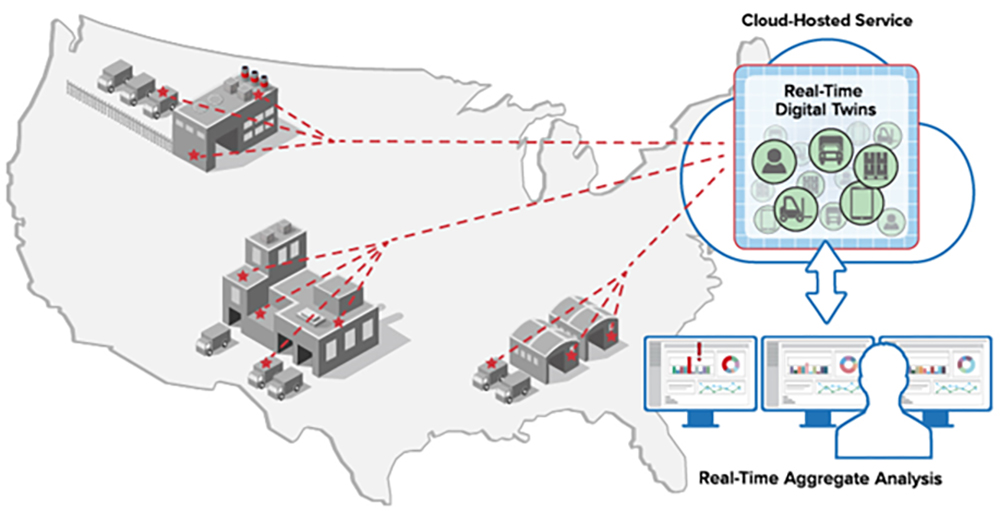Amazon, UPS and FedEx delivered an estimated 10 billion packages last year alone, and that total is only expected to accelerate. The COVID-19 pandemic boosted this trend as customers, especially those at high risk, seek alternatives to shopping in crowded stores. Many of these deliveries include critical items like food and medication. And if these supplies are not delivered on time, it can lead to life-threatening issues for customers.
To ensure important items are delivered correctly, these three companies manage a combined quarter-million delivery vehicles on routes across the United States. Each vehicle periodically sends telemetry messages about its location, speed, engine parameters, vehicle temperature and cargo status to central monitoring systems and applications through onboard Internet of Things (IoT) devices.
 With this sheer volume of streaming data, it is nearly impossible for logistics managers to extract critical insights and identify potential problems in real time. With traditional streaming analytics approaches, such as open-source Apache Storm and Flink, personnel can detect changes in message data, but they can’t assess their significance to take effective, individualized action for each vehicle.
With this sheer volume of streaming data, it is nearly impossible for logistics managers to extract critical insights and identify potential problems in real time. With traditional streaming analytics approaches, such as open-source Apache Storm and Flink, personnel can detect changes in message data, but they can’t assess their significance to take effective, individualized action for each vehicle.
Especially when receiving data from large numbers of data sources, these streaming analytics platforms are not built for deep introspection about each individual data source. They are designed to pass incoming data through a software pipeline to gain aggregate insights, in order to extract patterns of interest, and to send alerts when specific conditions are met. They do not track the dynamic state of the data sources themselves or make inferences about their behavior.
As such, essential questions are being left unanswered. For example, is a vehicle stopped because it’s at a rest stop or because it has stalled? Is the temperature on a truck higher than normal, or is this expected given the vehicle’s known issues? Will John Doe’s medication spoil after 48 hours or at high temperatures? Has a driver been on the road for too long? Does he or she appear to be lost or entering a potentially hazardous area?
Streaming Analytics Using Real-Time Digital Twins
A powerful new streaming data software technique, known as “real-time digital twins,” can provide the insights needed to answer these questions by analyzing incoming messages from each truck’s sensors with immediate access to contextual information for each vehicle. Using this information, the system can alert drivers and logistics managers to impending problems, such as road blockages, spoiled food and medication, delays or emerging mechanical issues. It can also assist lost drivers, alert them to erratic driving behavior or the need for rest stops, and help when changing conditions require route updates.
The following diagram shows trucks and smart warehouses communicating with their associated real-time digital twins within a cloud-hosted service that tracks shipments. Because real-time digital twins hold unique contextual data for each truck’s IoT devices, analysis code for incoming messages can provide highly focused feedback that goes well beyond what is possible with traditional streaming analytics.

Real-time digital twins run on public clouds, such as Microsoft Azure, to provide highly available and scalable streaming data insights. The cloud service can process messages and maintain real-time digital twins for thousands of trucks and warehouses across the United States simultaneously. It also can continuously aggregate and visualize key information from real-time digital twins to highlight emerging issues and boost situational awareness.
This software architecture simplifies the development of application code, which now only needs to process messages from a given data source instead of managing the flow of all incoming messages. Combined with immediate access to dynamic, contextual information that enriches analysis, real-time digital twins help deliver better feedback for drivers and warehouse managers, as well as enhanced overall situational awareness for the fleet.
Direct-to-consumer deliveries are the way of the future and are more important than ever due to COVID-19. While logistics companies cannot predict every delivery variance, they are working hard to prepare their data-management systems to make better use of streaming data and to obtain critical insights in the moment. These insights will ensure that customers who rely on the delivery of critical supplies are better served, and they will enable logistics providers to dramatically boost their efficiency and quality of service.
Dr. William L. Bain is the founder and CEO of ScaleOut Software, which has been developing software products since 2003 designed to enhance operational intelligence within live systems using scalable, in-memory computing technology. Bain earned a Ph.D. degree in electrical engineering from Rice University. Throughout his 40-year career focused on parallel computing, he has contributed to advancements at Bell Labs Research, Intel and Microsoft, and he holds several patents in computer architecture and distributed computing. Bain founded and ran three companies prior to ScaleOut Software. The most recent, Valence Research, developed web load-balancing software and was acquired by Microsoft to enhance the Windows Server operating system. As an investor and member of the screening committee for the Seattle-based Alliance of Angels, he is actively involved in entrepreneurship and the angel community.

